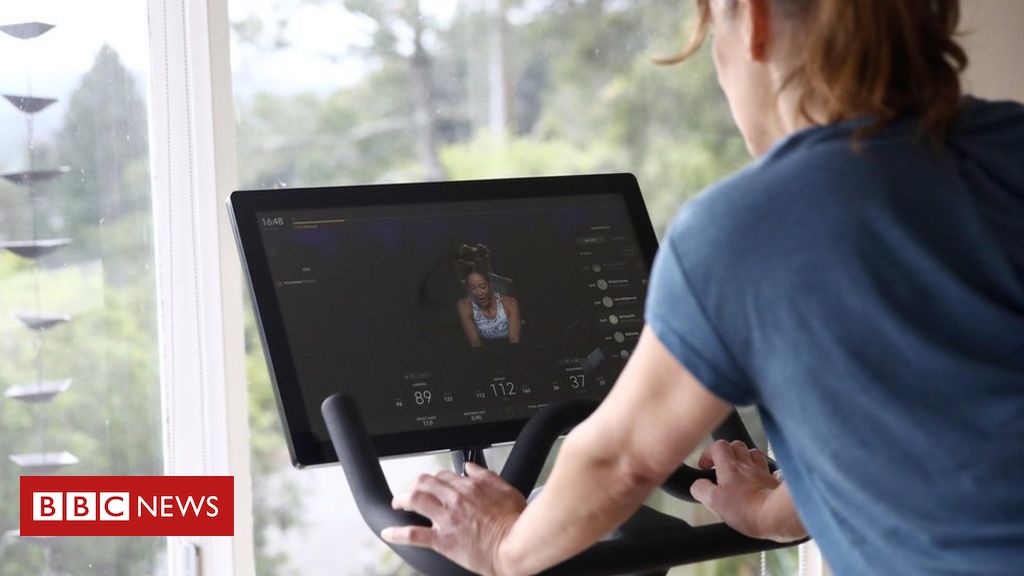Peloton, which won an early celebrity fanbase for its exercise bikes and remote workout classes, has seen demand surge during the pandemic.
The firm’s global membership base hit 3.1 million at the end of June, more than double a year earlier, as gym closures due to Covid-19 increased demand for at-home workouts.
The jump in sign-ups lifted revenue to $607m (£474m), up 172% year-on-year.
But it has also strained supply, prompting lengthy waits for equipment.
The firm had said it was slashing prices for its existing treadmill and bike, cutting the cost of the bike from $2,245 to $1,895 in an effort to make their products more accessible.
The move coincided with the launch of new, more expensive, versions of the same pieces of equipment.
But the firm, which relies on purchases of its machines fitted with touchscreens for most of its sales, said it did not expect delivery delays to improve much before the end of the year.
“Demand… remains strong and member engagement remains elevated, despite improving weather and the gradual reopening,” chief executive John Foley said on an analyst call after the firm shared its quarterly results on Thursday.
Peloton said the number of “connected fitness” subscribers, who access its remote classes via one of the firm’s machines, jumped to more than 1.09 million at the end of June, up 113% in comparison with the same period last year.
Those members are also working out more – averaging more than 24 workouts per month, compared to 12 one year ago.
The growth propelled the firm to its first quarterly profit of $89m, versus a loss of $47.4m last year.
Mr Foley told analysts he was not worried about demand subsiding after the pandemic, given the opportunities for global expansion.
Peloton said it expected the number of subscribers to exceed 2 million over the next 12 months and forecast revenue for its next financial year of at least $3.5bn.
The results shared by the firm exceeded analyst expectations, prompting shares to rise 7% in after-hours trade.

